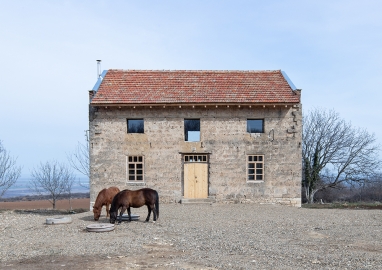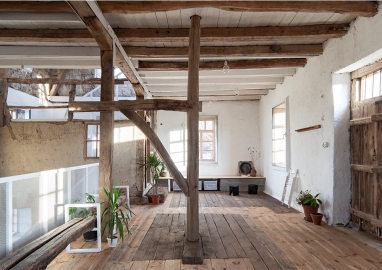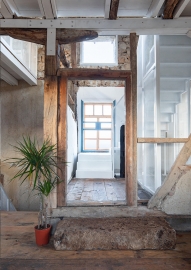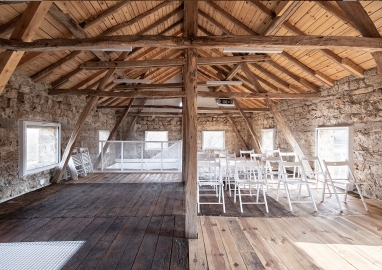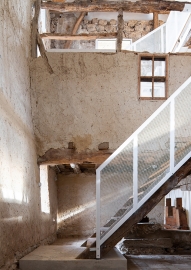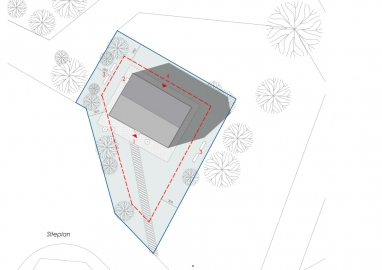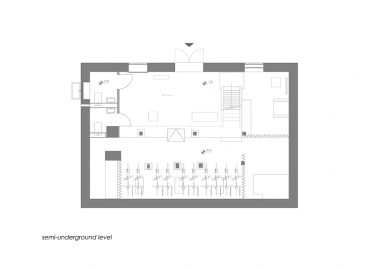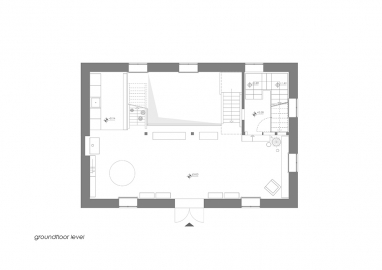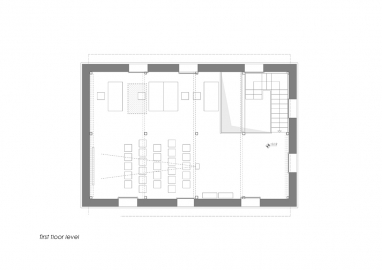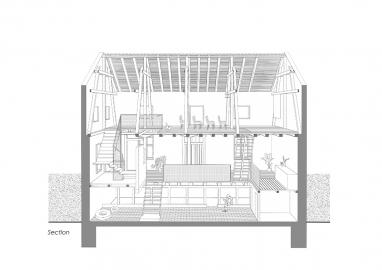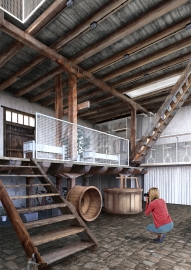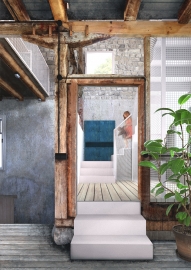Cultural Information Center "The Mill"
The old Mill is not only an important local landmark, but also a meeting point of cultures, nationalities, generations and ideas. The stone building situated at the very entrance of the village enchants its visitors with its unpretentious beauty. What was once an abandoned ruin is now brought back to life, adding new meaning to an old landmark.
The main aim of the project was the adaptation and repurposing of the abandoned building into a cultural centre, adopting the principles of the “honest” intervention and sustainable architecture.
The project aimed to keep the raw, rural aesthetics of the original fabric. In the same time to integrate the new function in a holistic sensible manner to meet the new needs. The balance between the authentic spirit and atmosphere and the contemporary footprint is an essential part of the design concept. The sustainable aspect was achieved by using local resources, natural materials and recycling the available ones (wooden planks, roof tiles, adobe bricks and plaster, baked bricks, stone, etc.)
The sharp contrast, the tender balance, the play between old and new, dark and light, ‘clean’ and ‘dirty’ create the special atmosphere of harmony with respect to the authenticity of the place.
The old Mill was initially built in the nearby village around 1933. Later on it was moved all the way to Karpachevo and rebuilt on the place it stands now. After it closed down it was abandoned and suffered serious damages due to the lack of maintenance.
The main concept in the planning process was to achieve a hybrid space that keeps its unique and genuine character, but also satisfies all the contemporary needs of the newly added function. Another important aspect was to use as much as possible the locally available resources in terms of materials and labour.
The 3-storey timber structure was kept in its original state – undergoing structural reinforcement where needed to provide safety for the visitors. Openings through the floors allow multi-storey vertical visual connection and communication.
The intervention in white metal builds on the contrast with the old structure and enlightens the interior space.
The collaboration between non-governmental organisations, charities, public institutions and private small businesses is a successful example of alternative approach, in which the local community and volunteers from all parts of the country played an active role.
The Mill is a two-story building with a semi-underground level. The outside load bearing walls are made in stone masonry – travertine blocks - once extracted from the local caves, nowadays protected and its extraction banned.
Wooden beams and columns support the story levels on the inside.
The ground floor, accessible from the main entrance to the south, consists of 3 zones – information point, kitchenette and communal area. The 1st floor acts as a multifunctional space that provides stage for different kinds of cultural events – trainings, presentations, workshops, lectures, public discussions and co-working space. Lavatories for visitors, storage space and rent-a-bike facilities are positioned at the semi-underground level.
To secure the access to the 1st floor a new staircase and railings were added. The old wooden stair was preserved in its original state, secured and exposed in the interior.
The wooden windows were remade in their original layout and doubled on the inside with aluminium double-glazed windows to ensure energy saving.
The original entrance doors were preserved ‘in situ’ and doubled on the outside with new wooden doors.

